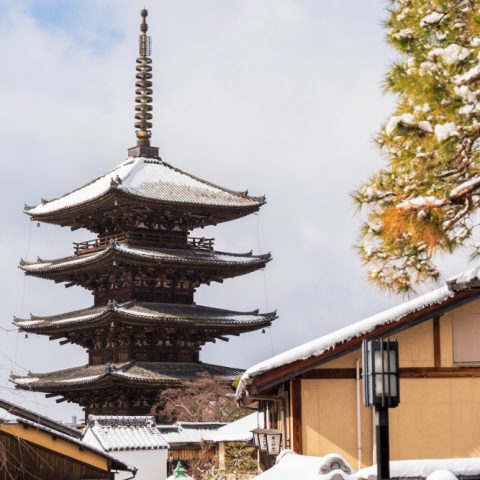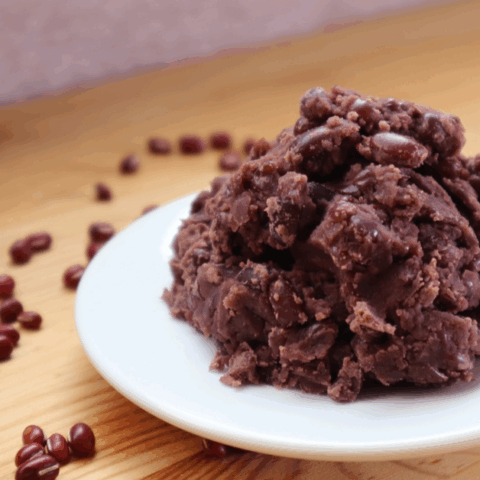
Autumn is just around the corner, and for me there is nothing more comforting than a home cooked meal when the weather starts to get chilly. Japanese do nourishing soul-food like no others, and in Kyoto there’s a truly special type of home cooked cuisine that it guaranteed to steal your heart.
We’re talking about obanzai ryori, the essence of traditional Kyoto’s home cooking.
This type of cuisine is handed down from generation to generation of Kyoto locals, and consists of cooking almost exclusively the typical vegetables of the Kyoto area, called kyo yasai. Fish and meat are used as well, but more to add depth in flavor rather than being a major component of the dish.
A typical obanzai meal will consist of several small dishes (mainly vegetables), a flavorful stew, and of course, a bowl of steamed rice.

Obanzai ryori display in a restaurant (Source: Ichihana Restaurant)
Obanzai ryori is a fairly simple cuisine, but to truly be considered “Obanzai”, it needs to have these elements:
- At least half of the products needs to be locally sourced in Kyoto;
- The produce needs to be seasonal;
- The cuisine must follow the “mottainai” concept (a sense of regret concerning waste).
This last point is especially important because, to avoid waste, basically every single part of the product is used and reimagined in an incredibly flavorful dish.
In restaurants that serve obanzai, it is typical to find huge bowls in front of the counter, all lined up displaying the dishes that are on the menu that day -super useful in case of a language barrier!
As I said earlier, an obanzai meal consists of numerous dishes served in small quantities. The food preparation is quite simple and incredibly flavorful, and thanks to the use of seasonal and locally sourced ingredients, a full course meal is pretty affordable as well. There are plenty of obanzai restaurants in Kyoto that offer nourishing, healthy and delicious meals at prices typically between 2,000 and 3,500 yen.

Obanzai ryori meal (Source: Kyoya Kiyomizu Restaurant)
As with any traditional cuisine, the preparation of obanzai follows precise steps, each of which is attached to customs that have been handed down through generations. The process of creating an obanzai meal consists of six steps:
- Planning the menu: an obanzai menu is planned according to the season, cultural events and seasonal traditions;
- Procuring ingredients: the products, especially vegetables, need to be locally sourced;
- Cooking: the cooking methods are simple: grilling, steaming, frying, boiling and sautéing. What gives the obanzai dishes a distinct flavour is the use of seasonings typical of the Kyoto area, such as shiro-miso (white soy bean paste) and usukuchi-shoyu (light-colored soy sauce);
- Plating up: like the food, the plating is fairly simple, but beautiful and visually captivating nonetheless. The food is presented in beautifully decorated bowls and plates that change depending on the season, reflecting also the seasonal changes of the food.
- Eating: traditionally, an obanzai meal was meant to share, so that the cook would sit with their guests and enjoy the meal together. Obanzai ryori gives importance not only to the food, but to the act of eating and sharing together a soul-warming meal, strengthening bonds with friends, family and the community.
- Cleaning up: after the delicious obanzai meal, dishes and bowls are cleaned and put back onto the shelves, so that the next obanzai meal can be prepared smoothly.

Obanzai ryori meal (Source: Nakashimaya Restaurant)
We’re seeing how obanzai is not just your typical local cuisine, it’s so much more than that. Obanzai ryori, in fact, embodies a real philosophy of life. To truly understand what it means to eat and cook this traditional cuisine, we have to take a look at the 5 core spiritual elements that make up obanzai ryori:
- Honma mon (genuine things): the use of genuine and authentic ingredients of great quality;
- Anbai (balance): is the act of finding a good balance between things, in this case reflected in finding harmony between ingredients;
- Deaimon (encounter): the word expresses that two different elements can come together and form a new identity. In obanzai cuisine, ingredients with different characteristics are combined together to create a unique flavour;
- Omotenashi (hospitality): the essence of Japanese hospitality. With obanzai it translates to cooking with the intention of making other people happy;
- Shimatsu (not creating waste): Literally meaning “from the beginning to the end”, this word signifies that every part of the ingredients must be used without wasting them. This word doesn’t imply a stringent attitude, but rather a profound respect for the nature and the people that produced that ingredient.
Obanzai ryori teaches us that, sometimes, we need to remind ourselves to take things slowly. By following the changing of the seasons we have a better chance to connect with nature and, therefore, with the food we are eating. Obanzai reminds us to appreciate what we have, and that even the simplest things can be transformed into something new and exciting everyday.
Featured image: A typical obanzai meal (source: Ichihana Restaurant)
Interested in Japanese cuisine? Make sure to join our Top 5 Japanese Foods online experience with a local expert!
PIN THIS FOR LATER




